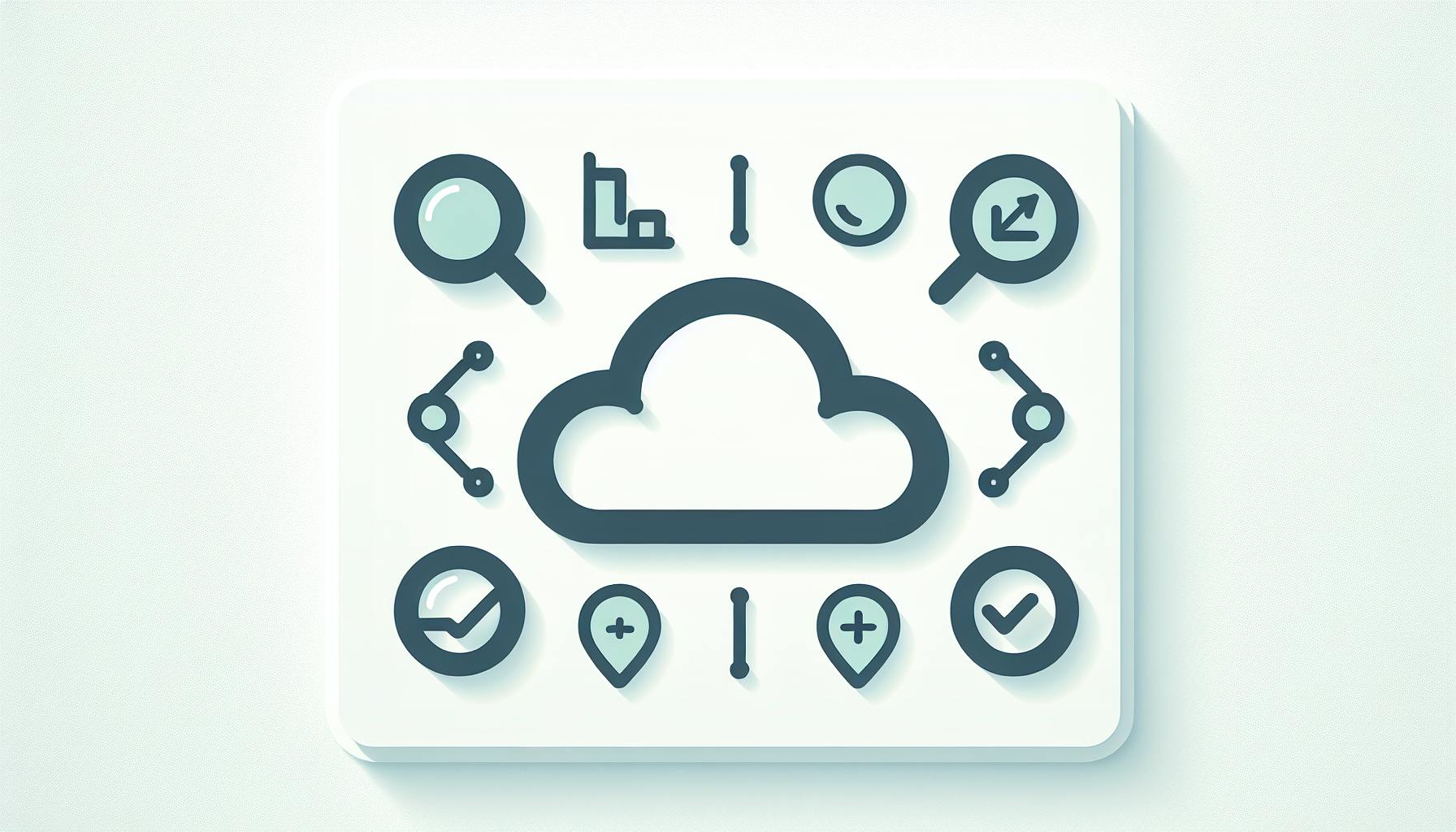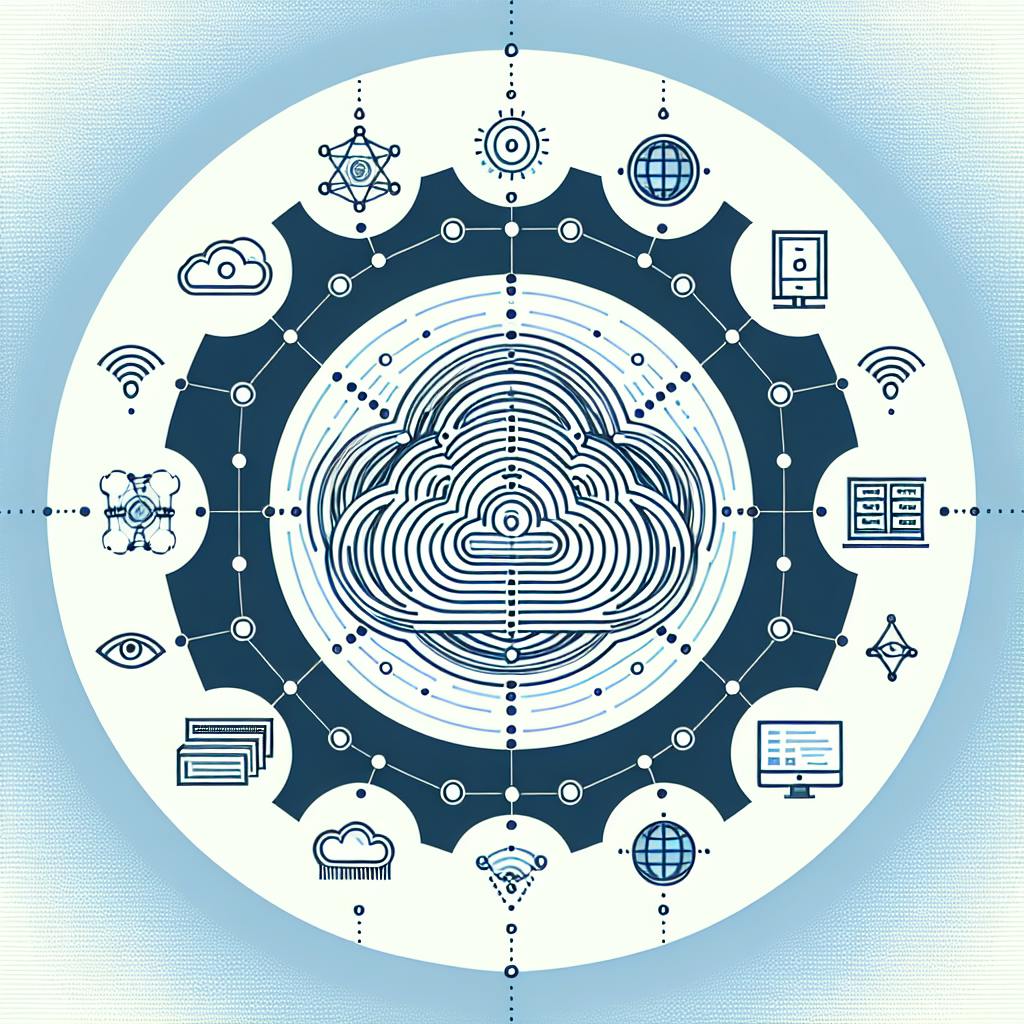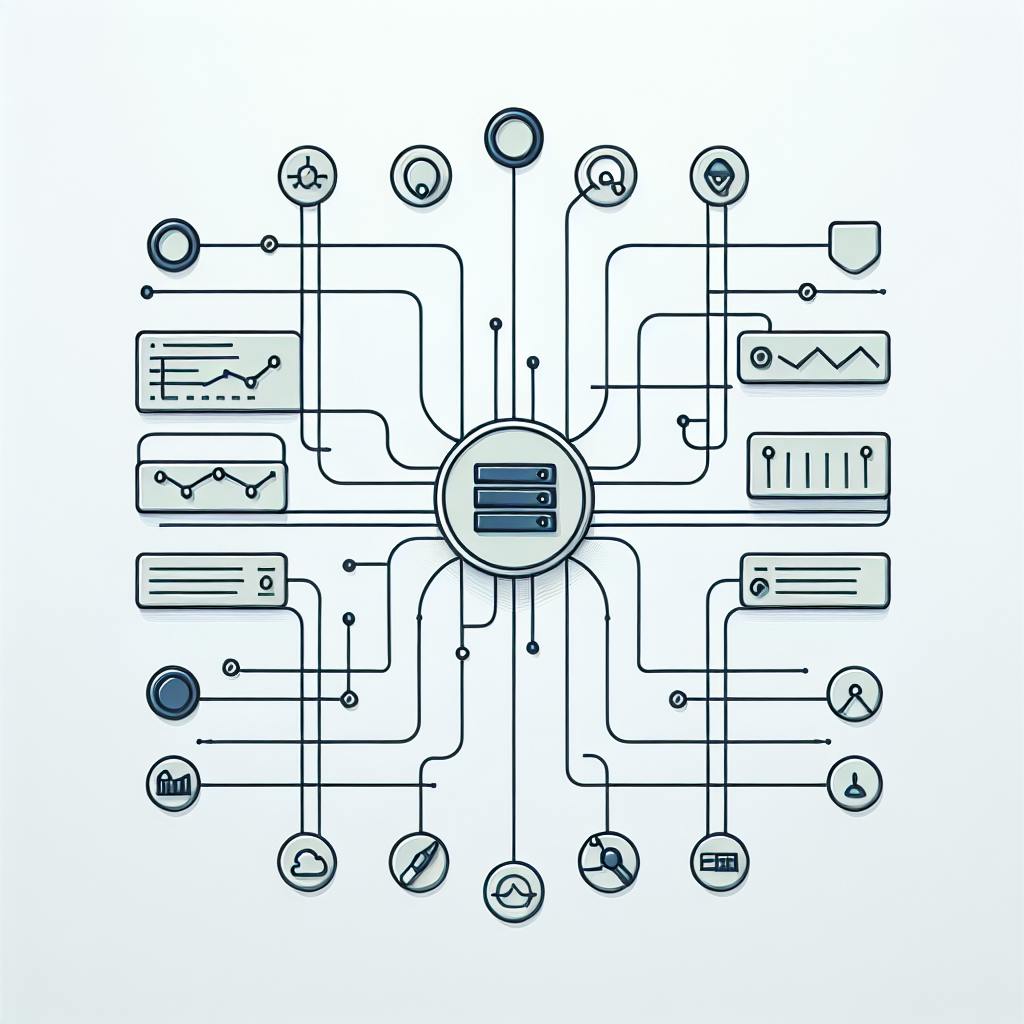Smart alerting systems help IT teams find and fix problems faster. Here's what you need to know:
- Uses AI and machine learning to spot issues quickly and accurately
- Reduces false alarms and alert overload
- Provides detailed context to speed up troubleshooting
- Helps predict and prevent future problems
Key features:
- Anomaly detection
- Alert correlation
- Intelligent routing
- Contextual information
Benefits:
- Faster problem resolution
- Improved system reliability
- More efficient IT teams
- Better user experience
To implement smart alerting:
- Set baseline performance levels
- Configure dynamic thresholds
- Use AI for pattern recognition
- Integrate with existing tools
Best practices:
- Keep alert rules updated
- Review and refine regularly
- Build a proactive team culture
Measure success by tracking:
- Time to detect (TTD)
- Time to respond (TTR)
- Time to resolve (TTR)
- System uptime
Smart alerting transforms how IT teams handle issues, leading to more reliable systems and happier users.
Related video from YouTube
2. Key Features of Smart Alerting Systems
Smart alerting systems are changing how IT teams handle problems. These systems use computer smarts to give better, more useful alerts.
2.1 Main Parts of Smart Alerting
Smart alerting systems have these key parts:
- Spotting Unusual Things: Finds odd patterns or changes from what's normal, helping catch problems early.
- Connecting Alerts: Looks at how different alerts are related, giving a full picture of an issue.
- Smart Alert Sending: Automatically sends alerts to the right team members based on past data.
- Adding Extra Info: Puts more details into alerts, like past trends and possible effects, to help make decisions faster.
2.2 Old vs. New Alerting Methods
Here's how old and new alerting methods compare:
| What It Does | Old Way | New Way |
|---|---|---|
| Triggers Alerts | Set limits | Changing limits based on situation |
| False Alarms | Many | Much fewer |
| Finding Root Causes | By hand, slow | By computer, fast |
| Alert Details | Few or none | Lots, including past data |
| Handles Growth | Not well | Very well |
| Learns and Changes | Needs manual updates | Learns and improves on its own |
2.3 How Smart Alerting Helps IT Teams
Smart alerting makes things better for IT teams:
- Less Alert Overload: Fewer false alarms and grouped alerts help teams focus on big issues.
- Quicker Problem Solving: More info in alerts helps teams fix problems faster, cutting downtime.
- Stopping Issues Before They Start: Catching odd things early helps prevent big problems.
- Better Use of People: Sending alerts to the right people helps teams work more efficiently.
- Smarter Choices: More info and computer-helped insights lead to better decisions about fixing issues and improving systems.
3. Setting Up Smart Alerting for Finding Root Causes
Here's how to set up smart alerting to help find the main causes of IT problems quickly.
3.1 Setting Normal Performance Levels
To set normal performance levels:
- Gather past data over time to see what's usual
- Look at the data to find normal ranges for different measures
- Think about regular ups and downs in your calculations
- Update these levels often as your IT setup changes
3.2 Setting Alert Limits
Use changing limits to catch real issues and avoid false alarms:
| Step | Action |
|---|---|
| Use smart tools | Set up computer-driven alerts that change based on what's happening |
| Mix limit types | Use both fixed and changing limits for better coverage |
| Allow some wiggle room | Don't alert right away for small, short-term changes |
| Check and fix | Look at your alerts often and change them if needed |
3.3 Using Smart Programs to Spot Odd Things
Smart programs help find unusual patterns:
- Use computer models to spot patterns and guess future issues
- Use advanced programs to look at lots of complex data
- Let the program change alert limits on its own as things change
- Use methods that can spot small differences from what's normal
3.4 Working with Your Current Tools
Make sure your new alerting works well with what you already have:
| Area | How to Connect |
|---|---|
| Current systems | Use connectors to link with your monitoring tools |
| Help desk tools | Make sure it works with popular IT and chat programs |
| Easy setup | Use tools that don't need coding to add info to alerts |
| Future growth | Pick connection methods that can grow with your needs |
4. AI and Machine Learning in Alerting
AI and machine learning are making alerting systems in IT better. These tools help find and fix problems faster and more accurately.
4.1 How AI/ML Makes Alerting Better
AI and machine learning improve alerting by:
- Finding patterns in system behavior
- Changing alert limits based on what's happening
- Sorting alerts by how important they are
AI can spot both known and new types of problems. It looks at the big picture, not just single events. This helps it catch issues even when new technologies are added.
AI systems also change alert limits as needed. This means fewer false alarms and helps IT teams focus on big problems.
| Old Alerting | AI/ML Alerting |
|---|---|
| Fixed limits | Limits that change |
| Alerts for single events | Alerts for patterns |
| Manual sorting | Automatic sorting |
| Little extra info | Lots of helpful info |
4.2 Spotting Problems Before They Happen
AI/ML can also predict issues before they cause trouble. It does this by:
- Looking at past data to guess future problems
- Helping teams fix things before they break
- Keeping systems running smoothly
For example, AI might notice small changes in how fast a website loads. This could mean a bigger problem is coming. By telling the IT team early, they can fix it before it causes trouble.
4.3 Connecting Events and Alerts
AI and machine learning are good at linking different alerts. This helps find the main cause of problems:
- Grouping related alerts: AI puts alerts about the same issue together. This makes it easier to see what's wrong.
- Finding connections: AI figures out how different parts of the system work together. It looks at groups of alerts, not just one at a time.
- Finding the main problem: By looking at patterns, AI can often find the real cause of an issue. This saves time for IT teams.
Here's an example of how this works:
| Step | Action |
|---|---|
| 1 | AI runs many checks at once |
| 2 | It puts all the results together |
| 3 | It gives a summary of what's wrong |
This helps IT teams fix problems faster by pointing them in the right direction or ruling out common causes.
5. Tips for Better Alert Management
Good alert management helps IT teams work better. Here are some ways to improve how you handle alerts:
5.1 Cutting Down on Too Many Alerts
Too many alerts can make IT teams miss important issues. To fix this:
- Focus on big problems: Pay attention to alerts that affect how systems work and what users see.
- Set better limits: Use past data to set alert limits that make sense.
- Use smart filters: Set up filters to ignore alerts that don't matter.
| Filter Type | What It Does | Example |
|---|---|---|
| Time | Ignores alerts at certain times | No small alerts from 10 PM to 6 AM |
| System | Ignores alerts from certain places | No alerts from test systems |
| Content | Ignores alerts with certain words | No alerts about routine work |
5.2 Sorting Alerts by How Important They Are
Putting alerts in order of importance helps teams work on the right things first:
1. How bad is it?: Is it a big system crash or a small setting change?
2. Who does it affect?: How many users have problems? Could it lose data or money?
3. How soon to fix?: Does it need fixing right away or can it wait?
4. Use smart programs: Let computer programs sort alerts by how important and urgent they are.
5.3 Putting Related Alerts Together
Grouping alerts that are about the same problem helps teams see what's wrong faster:
- Connect related alerts: Use smart programs to link alerts about the same issue.
- Remove repeat alerts: Set up a system to get rid of alerts that say the same thing.
- Make alert groups: Put alerts together based on which systems or services they affect.
| Why Group Alerts | How It Helps |
|---|---|
| See the big picture | Understand the whole problem, not just parts |
| Work faster | Fix the main issue instead of many small ones |
| Find the real cause | See patterns that show why something went wrong |
sbb-itb-9890dba
6. Using Smart Alerts to Find Problems Faster
Smart alerting tools help IT teams find and fix problems more quickly. Here's how these new tools make things better.
6.1 Spotting Issues Quickly
Smart alerts help teams find problems fast:
- Always watching: These tools keep an eye on your systems all the time. They can spot odd things before they become big problems.
- Connecting the dots: The tools link different events to show what's really going on. This saves time looking for the cause.
- Focusing on what matters: These systems can tell which problems are most important. This helps teams work on the big issues first.
| What It Does | How It Helps |
|---|---|
| Always watching | Catches problems early |
| Connecting events | Shows the real issue faster |
| Sorting by importance | Fixes big problems first |
6.2 Using Extra Info to Understand Problems
Smart alerts give more details to help figure out what's wrong:
- Lots of data: These tools show important info with each alert. This includes how systems are working, error messages, and recent changes. It helps teams understand the problem quickly.
- Looking at past events: The system compares new alerts to old ones. This shows if something unusual is happening.
- Suggesting fixes: Based on what it knows, the system can suggest ways to fix the problem. This helps teams solve issues faster.
6.3 Computer Guesses About What's Wrong
Smart alerts use computer smarts to guess what might be causing problems:
- Finding patterns: The system looks at lots of data to see if there are patterns in problems. This helps point to what might be wrong.
- Checking automatically: The system looks at how often different things happen when there's a problem. This helps it guess what might be causing the issue.
- Getting better over time: As the system sees more problems, it gets better at guessing what's wrong. This means it becomes more helpful as you use it.
| How It Works | What It Does |
|---|---|
| Finds patterns | Shows common causes of problems |
| Checks automatically | Guesses what might be wrong |
| Learns from experience | Gets better at helping over time |
7. Best Practices for Smart Alerting
Here's how to get the most out of your smart alerting system:
7.1 Keep Alert Limits Up-to-Date
To make sure your system works well:
- Check how your system usually runs
- Change alert limits based on what's normal
- Find the right balance to avoid too many or too few alerts
| Action | Why It Helps |
|---|---|
| Regular system checks | Keeps track of what's normal |
| Changing limits | Fits current system behavior |
| Finding the right balance | Catches real issues, not false alarms |
7.2 Look Over and Fix Alert Rules
Keep making your alert rules better:
- Ask for feedback to improve alerts
- Use data to see what needs fixing
- Follow the rules you set
- Check that alerts are handled quickly
7.3 Build a Team That Fixes Problems Early
Help your team catch and fix issues before they get big:
- Get different IT groups to work together
- Make people feel responsible for good alerts
- Thank people who handle alerts well
- Learn from big problems to stop them next time
| What to Do | How It Helps |
|---|---|
| Team teamwork | Everyone responds to alerts the same way |
| Make people care | Alerts and problem-solving get better |
| Say "good job" | Shows that handling alerts matters |
| Study big issues | Stops the same problems from happening again |
8. Measuring Smart Alerting Results
Checking how well smart alerting works helps IT teams make their systems better. By looking at key numbers, teams can see if their alerting is working and make it better.
8.1 Important Numbers to Watch
To see how good your smart alerting is, look at these numbers:
| Number | What It Means | Why It Matters |
|---|---|---|
| Time to Find (TTF) | How fast issues are found | Faster finding means quicker fixing |
| Time to Answer (TTA) | How fast teams respond | Shows how quick teams react |
| Time to Fix (TTF) | How fast issues are fixed | Affects how long systems are down |
| System Uptime | How often systems work | Shows overall system health |
8.2 Checking If Response and Fix Times Get Better
To see if smart alerting helps teams respond and fix things faster:
- Compare old and new response and fix times
- See how many fixes are done by computer vs. by people
- Look at how system health affects business goals
Smart alerting can make response and fix times much shorter. For example, computers can send alerts to the right teams quickly, and suggest fixes based on past problems.
8.3 Looking for Fewer False Alarms
Making sure there are fewer wrong alerts is important. To check this:
| What to Check | How to Check It |
|---|---|
| Real vs. False Alerts | Count how many alerts are real problems |
| Found vs. Reported Issues | See if the system or users find more problems |
| Time and Money Saved | Figure out how much time and money fewer false alarms save |
Even small improvements in false alarms can help teams work much better. Keep making alert rules better and use computers to check alerts first to have fewer false alarms.
9. Dealing with Smart Alerting Problems
Setting up smart alerting systems can help find problems faster, but it's not always easy. Here are some common issues and how to fix them.
9.1 Fixing Bad Data
Bad data can make smart alerts less useful. To get better data:
- Check and clean data regularly
- Look at where data comes from often
- Use computer programs to spot odd data
- Make clear rules about how to handle data
Better data means smart alerts work better and help find problems faster.
9.2 Handling Lots of Alerts in Big Systems
Big IT systems can make too many alerts. Here's how to deal with that:
| What to Do | How It Works | Why It Helps |
|---|---|---|
| Sort alerts | Put alerts in groups based on how big the problem is | Focus on big issues first |
| Group similar alerts | Put related alerts together | Less alerts to look at |
| Change alert limits | Use computers to change when alerts happen | Fewer false alarms |
| Make special alert views | Create screens that show only certain alerts | Easier to see important alerts |
These steps help IT teams handle more alerts and find the main problems faster.
9.3 Mixing Computers and People
While computers help a lot, people are still important. To use both well:
- Let computers handle small issues and tell people about big ones
- Ask people what works and change how computers send alerts
- Teach IT staff how to use smart alerts better
- Make clear steps for when to ask people for help
10. Conclusion
10.1 Main Benefits Recap
Smart alerting systems have made IT work much better. Here's how they help:
| Benefit | How It Helps |
|---|---|
| Fewer Useless Alerts | Teams only see important issues |
| Teams Work Better | People can focus on big problems |
| Fix Issues Faster | Gives helpful info to solve problems quickly |
| Save Money | Stops big system failures |
| Works for Big Systems | Keeps working well as IT grows |
These changes help IT teams do their jobs better, make users happier, and handle big problems more easily.
10.2 What's Next for Smart Alerting
Smart alerting will keep getting better:
- Smarter Computer Help: Computers will get even better at guessing when problems might happen
- More Things Done by Computer: Computers will handle more small tasks so people can work on hard problems
- Better Understanding of Issues: The system will know more about why alerts happen
- Works with More Tools: Will connect easily with other IT tools
- Alerts Made for Each Person: Alerts will change based on what each IT worker needs to know
As smart alerting gets better, it will be a big part of keeping IT systems running well and helping companies use new computer tools.



